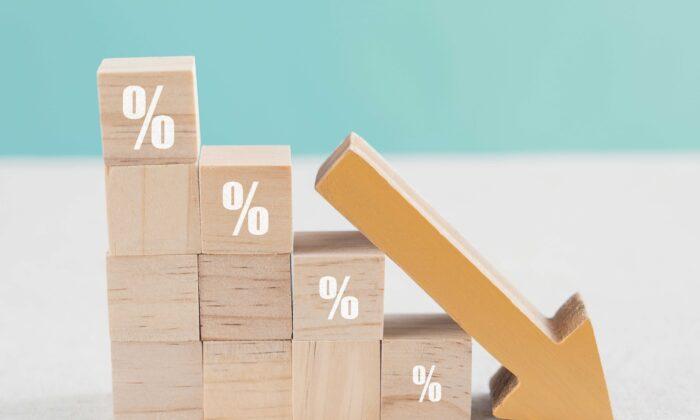The U.S. economy in the first quarter of 2022 saw its worse contraction since the pandemic in 2020, according to revised data from the U.S. Bureau of Economic Analysis (BEA) released on June 29.
The agency blames the downturn on an unexpected decline in economic activity due to the Omicron variant amid reduced government assistance.
The 1.6 percent decline in GDP is the first since the second quarter of 2020, in stark contrast to the fourth quarter of 2021 where real GDP increased by 6.9 percent—the fastest rate gain in 40 years due to a jump in exports and an increase in U.S. auto stocks.
“The ’third‘ estimate of GDP released today is based on more complete source data than were available for the ’second’ estimate issued last month,” reported the BEA.
“In the second estimate, the decrease in real GDP was 1.5 percent. The update primarily reflects a downward revision to personal consumption expenditures (PCE) that was partly offset by an upward revision to private inventory investment.”
The third revised estimate reflected lower than expected spending on business inventories and a drop in the housing market, offset partially by a rise in consumer spending.
The first quarter saw the spread Omicron variant resulting in continued government mandates and restrictions on businesses, which caused a disruption in the economy.
Contributing to the drop off was a winding down of government assistance programs, such as forgivable loans and relief to struggling businesses and households, which began to expire at the end of the quarter.
Real disposable personal income in the first quarter decreased by 7.8 percent, compared with a decline of 4.5 percent in the fourth quarter, while personal savings fell to $1.02 trillion from $1.45 trillion in the first and fourth quarters respectively.
The report said that a broad decline in U.S. exports, rising government spending, a glut in business inventories, along with an increase in imports, led to the overall decline in real GDP.
The decrease in exports was due to a widespread decline in foreign orders of nondurable goods, while the increase in imports was led by non-food and non-automotive consumer goods.
The widespread decrease in purchases of nondurable goods was led by groceries and energy due to rising prices, but was largely offset by an increase in orders of durable goods such as motor vehicles and parts.
There was a drop off in federal government spending primarily in defense spending on intermediate goods and services, while the decline in private inventory investment was mainly led by the wholesale trade in vehicles, as well as mining, utilities, and construction.
The revised price index for gross domestic purchases increased by 8 percent in the first quarter, compared with an increase of 7 percent in the fourth quarter.
The revised PCE price index increased 7.1 percent, compared with an increase of 6.4 percent in Q4 2021.
The PCE price index, when excluding food and energy prices, increased by 5.2 percent compared with an increase of 5 percent at the end of last year.
The stock market in the last quarter posted its worst showing since the shock to the economy from the pandemic in early 2020, with the S&P falling 5 percent and the Nasdaq taking 9 percent in losses.
The termination of the Federal Reserve’s pandemic stimulus policy, along with its hiking of interest rates to fight inflation and Russia’s invasion of Ukraine, have caused much uncertainty in the market, with a number of experts warning that the odds of a recession next year are growing.
The S&P Global Ratings report on June 27 put the odds of a recession in 2023 at 40 percent and said that aggressive Federal Reserve policies to combat inflation will usher in low economic growth this year and raise the risk of a recession.
“The further out on the yield curve, the less the influence of central bank policy,” he wrote.
He also said that “the shift from the tsunami of central bank money to cuts in the Fed’s hoard via quantitative tightening and the end of massive fiscal stimulus is a major shock to the economy.”
“The 1.30-percentage-point jump in the 10-year yield implies a 3.5-percentage point rise in the funds rate, which would bring it close to 4%. That’s high enough to kill the economic expansion that has been floating on a sea of readily-available and cheap credit,” he concluded.






Friends Read Free